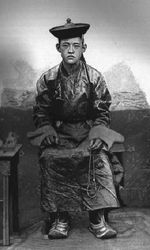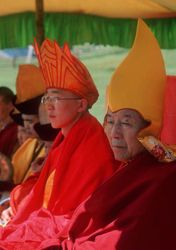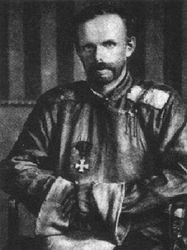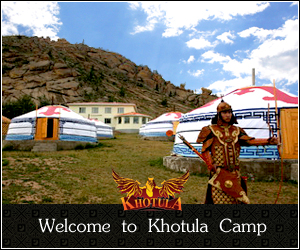The last Bogd Khan and the lost aristocrats of Mongolia
 Historic evidence shows us that with the loss of the last Bogd Khan, we also lost our last aristocrats, domestic as well as foreign. We lost also our independence and our third neighbor. The history of that time can give us a lesson for the future.
Historic evidence shows us that with the loss of the last Bogd Khan, we also lost our last aristocrats, domestic as well as foreign. We lost also our independence and our third neighbor. The history of that time can give us a lesson for the future.
On December 1, 1911, Outer Mongolia in effect proclaimed its independence on the basis that its allegiance had been to Manchuria, not to China. On December 28, the eighth Jebtsundamba Khutuktu became Bogdo Khan (holy ruler) of an autonomous theocratic government. Upon the declaration of independence, a Mongolian government was established, under the leadership of the Bogd Khan (The God King), and by 1915 the Kyahta Treaty was signed between Russia, China and Mongolia granting Mongolia autonomy.
The Bogd Khan, has become the emperor of an independent Mongolia.Till his death in 1924 he remained a holiness and ruler of Mongolia. The new Chinese government refused to recognize Mongolian independence, but internal fights took too much time to fight over sovereignty over Mongolia. The country at that time had already a diverse ethnic community with foreigners investing in gold mines, engineers and experts.  By 1920 you could even find a small Jewish community made up of businessmen and their families, political prisoners, engineers and Russian Jews fleeing persecution and civil war. The community was virtually wiped out by 1921, when the Russian anti-Bolshevik forces retreating into Mongolia after being defeated in Central Asia.
By 1920 you could even find a small Jewish community made up of businessmen and their families, political prisoners, engineers and Russian Jews fleeing persecution and civil war. The community was virtually wiped out by 1921, when the Russian anti-Bolshevik forces retreating into Mongolia after being defeated in Central Asia.
Bogd Khan while respecting the Mongolian traditions, felt sympathies to western evolution. While Mongolian aristocrats wore Mongolian titles, non-ethnic foreign advisors and personalities received titles with foreign denominations, most commonly Baron. The awarding of this hereditary title which could pass to both male as female, should guarantee the much needed expertise as well as support against the imperialistic intentions of the immediate neighbours. Bogd Khan admired the first Bogd Gegen Zanabazar 1723), Zanabazer was via his grandfather a direct descendant of Ghenghis Khan. The symbolism of uniting Buddhism and the spirit and father of Mongolian nation, Ghenghis Khan, was essential in this troubled period of Mongolian history. The closest foreigners to Bogd Khan even received the honour to change their names to abbreviations of the names of the former 7 Bogd Gegens. It is said that the most closest to Bogd Khan took the abbreviated family name of the first Bogd Gegen by using the first 3 and last 3 letters of the name.
After revolution broke out in Russia in November 1917, Japan moved to aid anti-Bolshevik forces in Mongolia, and a Japanesefostered pan-Mongol movement was established under the influence of the Buryat Mongols. Soon, however, the effects of the upheaval in Russia began to reach Mongolia. In October 1920, Russian White Guard troops under Baron Roman Nicolaus von Ungern-Sternberg invaded from Siberia. In February 1921, after a fierce battle, Von Ungern-Sternberg drove the Chinese out of Niyslel Huree and occupied the city. At first the White Guards were hailed as liberators by Mongolian monarchists, but in the next several months Von UngernSternberg ‘s reign of terror and destruction aroused popular opposition.
 Baron Roman von Ungern-Sternberg was known as ŌĆ£the mad baron of MongoliaŌĆØ. He took the city by raping and plundering for 3 days and 3 nights and ruled Mongolia for eight months, supported and financed by Japan. After that time, he decided to invade Russia. He was caught in August 1921 and executed. Von Ungern-Sternberg was exhibited in a cage on various railway platforms. People who saw his body remarked on his incredibly tiny head. After his death, the Thirteenth Dalai Lama did declare him an incarnation of the Black Mahakala, a six armed Tibetan demon prone to manifest itself in a necklace of human skulls.
Baron Roman von Ungern-Sternberg was known as ŌĆ£the mad baron of MongoliaŌĆØ. He took the city by raping and plundering for 3 days and 3 nights and ruled Mongolia for eight months, supported and financed by Japan. After that time, he decided to invade Russia. He was caught in August 1921 and executed. Von Ungern-Sternberg was exhibited in a cage on various railway platforms. People who saw his body remarked on his incredibly tiny head. After his death, the Thirteenth Dalai Lama did declare him an incarnation of the Black Mahakala, a six armed Tibetan demon prone to manifest itself in a necklace of human skulls.
It is this incarnation of Black Mahakala, the evil personalized in one person, that destroyed the court and last aristocrats of Mongolia. Mongolia lost its best experts and entered a long period of stagnation.












